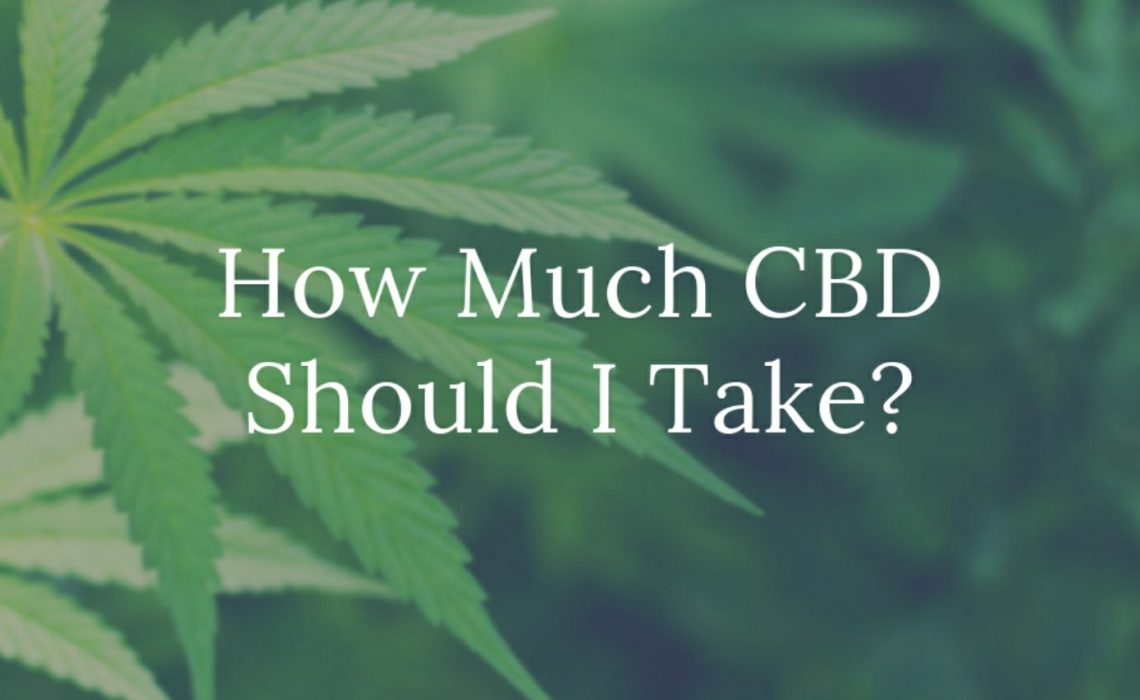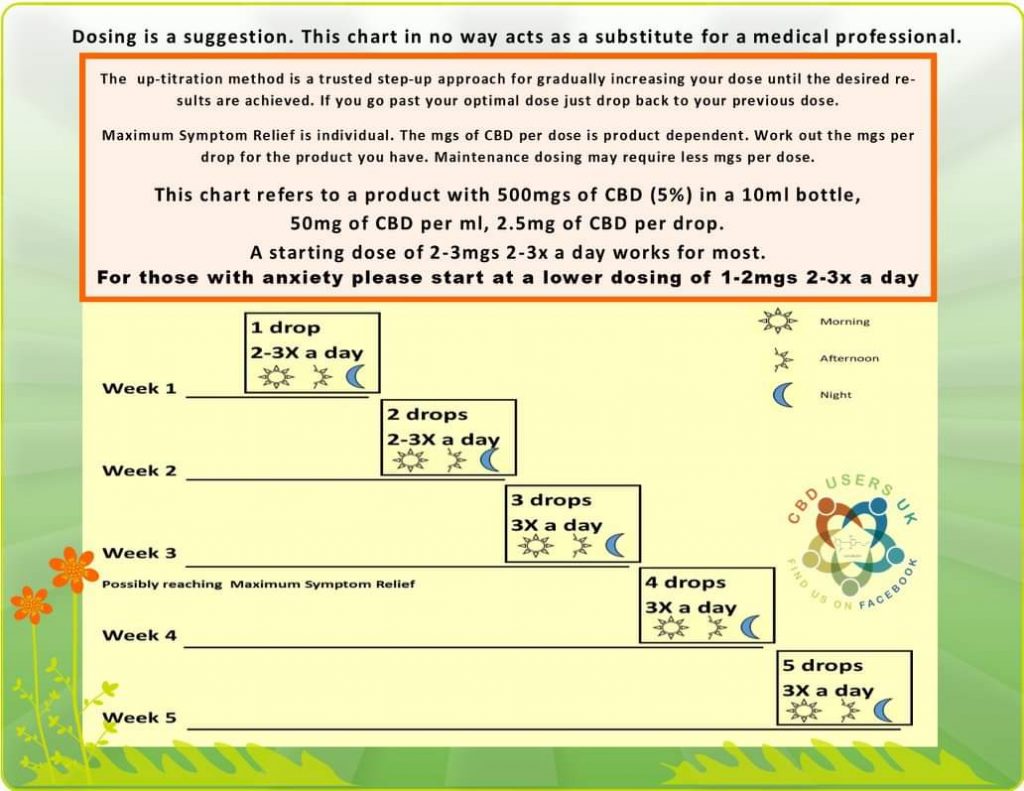
How much CBD should I take? is an important and frequently asked question, but I’m afraid the answer isn’t a straightforward one.
I cannot turn around and tell you; for chronic pain you need 40mg of CBD a day, or for anxiety you need 15mg. The truth is, we are all unique and therefore dosing requirements will differ for each individual. Also, CBD products differ from company to company, and the cannabinoid and terpene profile will determine how effective a product is for you, and therefore affect the amount you need to take.
There are however, certain tips I can give you to enable you to find your optimal CBD dose. By following these guidelines you can gradually build up to an effective dose that tackles your specific health requirements.
Factors that may affect your optimal CBD dose
Firstly, when it comes to cannabinoids, there is one universal truth to keep in mind: Everyone is different. This is why there isn’t a standard CBD dose for all individuals, and many factors will influence the dose you require.
Here are some factors which may affect optimal CBD dose:
- The weight of the individual
- The individual’s body chemistry
- The severity of the condition being treated
- An individual’s sensitivity to CBD
- The concentration and profile of CBD product
- The bioavailability (absorption rate) of the CBD product being taken.
There isn’t a “one size fits all” dosage, and there will be some trial and error while gauging your proper dosage. Not only are we all made differently, we each have our own unique history with the use of substances, medications, supplements, and other things we put in our body. Because of this, we all have different body chemistry, and this will affect how our body reacts to CBD.
So with this is mind, how do you begin to find an effective CBD dose?
Gauge how your body responds to CBD
When beginning CBD, it’s best to start with the lowest possible dose to gauge how your body responds. Everyone reacts differently to various supplements, and CBD is no exception. Take one drop of CBD oil and listen to your body. Do you feel drowsy? Do you feel energised? Are you experiencing any symptoms that are not usual for you?
Once you have assessed how you personally react to CBD you can begin to find your optimal dose.
Dosing according to body weight
I do need to mention at this point, that some articles will recommend dosing CBD by a person’s body weight. I however, have not come across anyone that has found this method of dosing effective. But if you would like to try this method; A CBD dose of between 1mg-5mg (milligram) per 4.5kg body weight is often recommended. But please bear in mind that there are many factors which may influence your optimal CBD dose, not just weight, so you may have to experiment a bit.
How to find your optimal CBD dose. The “low and slow” approach to introducing CBD
The most common method of dosing CBD, and the one I personally believe is the best, is the “low and slow” approach. With this method you start with a low CBD dose and slowly increase your intake each week, until you reach the desired effect.
- A good starting point is: 2-3mg of CBD, 3 times a day, for the first week. This is likely to equate to 1-2 drops (or sprays) of CBD oil, but this will depend on the strength of the oil you are taking.
- Spread the drops throughout the day. For example, take one in the morning, one in the afternoon and one in the evening. Maintain this dose for a week.
- The next step is to gauge how your body reacted to that amount of CBD, then increase gradually each week, while continuing to monitor your body’s reactions, till you find the perfect dosage that works for your health situation.

You will know when you have reached your optimal dose, because a further increase in CBD does not bring with it addition benefits.
Please note: The “low and slow” approach may not be suitable for all health situations. There may be some circumstances, including treatment of conditions involving seizures like epilepsy, where higher doses of CBD are beneficial from the outset. If you have any queries please consult your doctor.
Don’t overdo it. Cannabis compounds have biphasic properties, which means that low and high doses of the same substance can produce opposite effects. In the CBD community, there is general agreement that too much, or “over-doing it” can result in no changes at all, or adverse effects. “Less is more” is often the case with respect to cannabis therapy.
Ultimately, your goal is to find the lowest dose that works for you and you alone.
The Bell Curve Effect
Once you have found your optimal level, there is no need to continue to increase your dose because the benefits of CBD follow a bell-curve of effectivity.
This means that as you increase your dose of CBD per week, the benefit from taking CBD will increase, but only up to a point. Past this point, the benefits slowly diminish and become negated. This is why it’s recommended that you to start low and slowly increase your dose until you reach optimal results.
But if you find your health circumstances change, please don’t be afraid to experiment with your CBD dose.
Why the “low and slow” approach is recommended
There are a few reasons why the “low and slow” approach to in CBD is recommended:
1. It minimises unwanted side effects
When you first start taking CBD you may experience some mild side effects including headaches, dry mouth, dizziness and nausea. These side effects are more likely to occur if you start with a high dose. So starting at a low dose and slowly increasing will minimise the potential side effects you experience.
If you would like to find out more about the potential side effects of taking CBD and ways to reduce them, please click here.
2. Reduces the symptoms of “Herxing”
Also, some people report feeling worse before they feel better when they first start taking CBD. Many believe a phenomenon called “the Herxheimer reaction” or “Herxing” is to blame. It’s a temporary state where you feel worse as your body tries to heal itself. Common symptoms include headaches, upset stomach, flu-like symptoms and rashes on the skin. These symptoms appear to last anywhere from a few days to a few weeks.
By controlling your CBD intake and starting at a low dose, you can minimise these unpleasant symptoms. Also drinking plenty of water will help.
3. CBD has biphasic properties
As I have already mentioned, CBD has biphasic properties. This means that high and low doses can produce different, or even opposite, results. For example, in the case of mood disorders, low doses can be calming, high doses can be stimulating and exacerbate anxiety for some people (not all). Starting low and adjusting dose gradually can help to minimise this and get the result you want.
4. Save yourself money
And finally, why take more CBD than you need to? As CBD works on a bell-curve, any additional CBD you take above your optimal dose could be seen as wasted money.
How to work out milligrams (mg) per dose
You may now be asking; but how do I know how many milligrams (mg) of CBD I’m taking? How do I calculate milligrams (mg) of CBD per dose?
Some CBD products, like capsules and edibles, have a pre measured dose, so calculating the dose is easy – just read the label. But with CBD oils the milligrams (mg) per dose is not always obvious and may require a bit of simple maths. Let me talk you through it;
CBD Oils (oral use)
In a 10ml bottle of CBD oil there are approximately 200 drops. So to find out how many milligrams (mg) per drop you just divide the total milligrams (mg) of CBD per bottle by 200. Obviously for bigger bottles you need to adjust your calculation.
Example:
500mg per 10ml (5%)
500/200 = 2.5mg per drop.
These are approximate figures but they will at least give you an estimate of the dose you are taking. I will cover this subject in more detail, along with the often confusing world of labelling, in a future article.
If you are still confused about how to work out the milligrams (mg) per dose of the CBD product you have, please feel free to leave a comment or message me on my CBD Resource Centre Facebook page, and I will be happy to calculate it for you.
Please be aware that the bioavailability (absorption rate) will differ depending on the method of CBD consumption you choose. This means that for capsules for example, you may need to increase your dose to compensate for a lower absorption rate. If you would like to find out more about about the many ways to take CBD along with the bioavailability of different methods, please read my article: 6 effective ways to take CBD.
Patience is key
You may feel like this is a lot of information to take in, so here is a summary;
There is no set recommended dose for CBD oil as everyone reacts differently. But for most conditions a dose of 2-3mg, 2-3 times a day is a good place to start. That equates to approx 1 drop of CBD oil, 2-3 times a day, but of course this will depend on the strength of the CBD product you are taking.
After gauging how your body responds, increase after a week if necessary, until you get the desired results. (This dosage advise doesn’t apply to conditions involving seizures like epilepsy)
Finding an effective dosage of CBD can take time and patience. But taking the time to find your optimal CBD dose is well worth the effort and comes with a multitude of potential benefits, so please persevere.
Good luck, and please feel free to ask questions.
Please head over to my new Facebook page CBD Resource Centre, for everything you need to know about CBD, along with the latest discount codes and promotions.

After nine months and several oils less is more for me I take three drops four times a day for my RA , Brothers green which is quite cheap and mild keeps my pain at bay
This was helpful. I’m a cannabis patient and they don’t give you too much guidance on taking it properly, but I’ve figured it out.
How much is in each dose from the pen please?
My son has just been diagnosed with oesophageal cancer spread to the lungs stage 4. Sent home to die. He’s 48. He’d lost 3 stone and didn’t think anything was so badly wrong apart from GERD. So I don’t know if the Pen would be too powerful and if not what would each dose be. He’s been told less than 12 weeks. Many thanks.